News
map3d 5.2 now Available
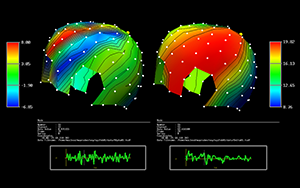 map3d is a scientific visualization application developed at the Nora Eccles Harrison Cardiovascular Research and Training (CVRTI) and the Scientific Computing and Imaging Institute (SCI) at the University of Utah. The original purpose of the program was to interactively view scalar fields of electric potentials from measurements and simulations in cardiac electrophysiology. Its present utility is much broader but continues to focus on viewing three-dimensional distributions of scalar values associated with an underlying geometry consisting of node points joined into surface or volume meshes.
map3d is a scientific visualization application developed at the Nora Eccles Harrison Cardiovascular Research and Training (CVRTI) and the Scientific Computing and Imaging Institute (SCI) at the University of Utah. The original purpose of the program was to interactively view scalar fields of electric potentials from measurements and simulations in cardiac electrophysiology. Its present utility is much broader but continues to focus on viewing three-dimensional distributions of scalar values associated with an underlying geometry consisting of node points joined into surface or volume meshes.
SCI Institute Director Gives Plenary Talk on Visualization at Supercomputing 2001
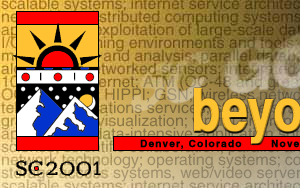 Dr. Chris Johnson delivered a plenary talk entitled "Scientific Visualization: Bridging the Complexity Threshold" at this year's Supercomputing conference in Denver, Colorado. Dr. Johnson discussed the need to bridge the "complexity threshold" in order to develop useful applications for analyzing data. He reviewed the state-of-the-art in visualization techniques, their use in real world applications, and presented an outline for future visualization research.
Dr. Chris Johnson delivered a plenary talk entitled "Scientific Visualization: Bridging the Complexity Threshold" at this year's Supercomputing conference in Denver, Colorado. Dr. Johnson discussed the need to bridge the "complexity threshold" in order to develop useful applications for analyzing data. He reviewed the state-of-the-art in visualization techniques, their use in real world applications, and presented an outline for future visualization research.Supercomputing 2001 Plenaries
Best Paper Award at Vis 2001
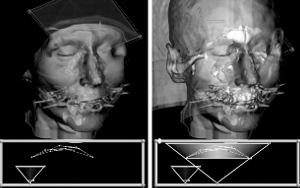 At the IEEE Visualization 2001 conference in San Diego, Joe Kniss, Gordon Kindlmann, and Chuck Hansen of the SCI Institute were awarded "Best Paper" for "Interactive Volume Rendering with Multi-dimensional Transfer Functions and Direct Manipulation Widgets." This paper focuses on the added value of higher dimensional transfer functions and attempts to solve the complexity of using them with an integrated system. The system features a user interface that joins interactions in both the spatial domain (volume rendering) and transfer function domain, while taking advantage of modern graphics hardware to make it interactive.
At the IEEE Visualization 2001 conference in San Diego, Joe Kniss, Gordon Kindlmann, and Chuck Hansen of the SCI Institute were awarded "Best Paper" for "Interactive Volume Rendering with Multi-dimensional Transfer Functions and Direct Manipulation Widgets." This paper focuses on the added value of higher dimensional transfer functions and attempts to solve the complexity of using them with an integrated system. The system features a user interface that joins interactions in both the spatial domain (volume rendering) and transfer function domain, while taking advantage of modern graphics hardware to make it interactive.
BISTI Grant Awarded to SCI
 The SCI Institute has been formally awarded a National Institutes of Health grant from the Biomedical Information Science and Technology Initiative(BISTI). This grant will be used to create a Program of Excellence in Computational Bioimaging and Visualization at the University of Utah. The award totals $2,261,136, distributed over three years, and includes collaborators from the departments of Bioengineering, Radiology, Neurosurgery and the Cardiovascular Research and Training Institute (CVRTI). Through awards such as these, NIH Institutes and Centers seek to establish National Programs of Excellence in Biomedical Computing (NPEBC). Funding for the SCI Institute grant comes from the National Heart, Lung, and Blood Institute within the National Institutes of Health.
The SCI Institute has been formally awarded a National Institutes of Health grant from the Biomedical Information Science and Technology Initiative(BISTI). This grant will be used to create a Program of Excellence in Computational Bioimaging and Visualization at the University of Utah. The award totals $2,261,136, distributed over three years, and includes collaborators from the departments of Bioengineering, Radiology, Neurosurgery and the Cardiovascular Research and Training Institute (CVRTI). Through awards such as these, NIH Institutes and Centers seek to establish National Programs of Excellence in Biomedical Computing (NPEBC). Funding for the SCI Institute grant comes from the National Heart, Lung, and Blood Institute within the National Institutes of Health.
SCI and the Governor's New Ecosystem
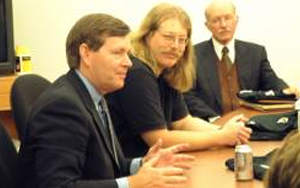 On August 28, 2001, Dr. Chris Johnson attended a press conference conducted by Utah Governor Mike Leavitt. The governor launched a new program to generate business activity and investment in Utah's high technology ecosystems. Each ecosystem consists of academic researchers, business leaders, anchor companies, venture capitalists, and professional service providers who collectively promote business activity. Dr. Johnson spoke at this press conference with regard to the multidisciplinary nature of ongoing research at the SCI Institute.
On August 28, 2001, Dr. Chris Johnson attended a press conference conducted by Utah Governor Mike Leavitt. The governor launched a new program to generate business activity and investment in Utah's high technology ecosystems. Each ecosystem consists of academic researchers, business leaders, anchor companies, venture capitalists, and professional service providers who collectively promote business activity. Dr. Johnson spoke at this press conference with regard to the multidisciplinary nature of ongoing research at the SCI Institute.
SCI Institute Establishes Access Grid Node
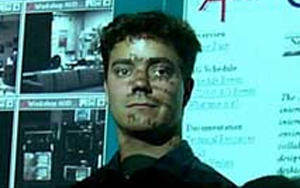 With the rapid advancement of new communication technologies, today's scientists are able to communicate more frequently and easily with collaborators and colleagues throughout the world. Collaborations used to require travelling on sabbaticals and meeting at infrequent conferences. Today, researchers need a way to collaborate remotely beyond the constraints of email and FTP.
With the rapid advancement of new communication technologies, today's scientists are able to communicate more frequently and easily with collaborators and colleagues throughout the world. Collaborations used to require travelling on sabbaticals and meeting at infrequent conferences. Today, researchers need a way to collaborate remotely beyond the constraints of email and FTP.




